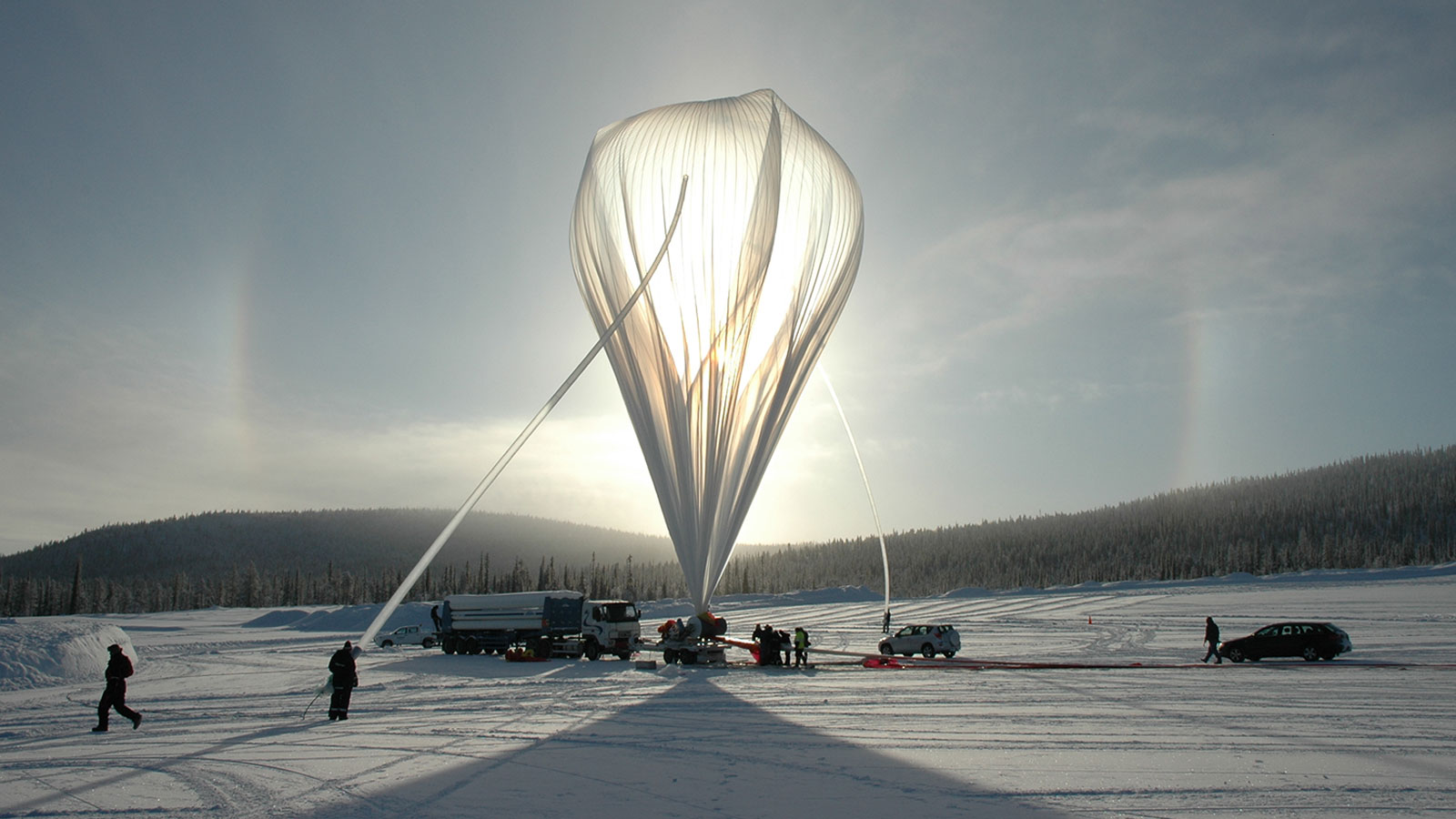In 2006, a group of preeminent scientists met for a two-day conference at the NASA Ames Research Center in California to discuss cooling the Earth by injecting particles into the stratosphere to reflect sunlight into space.
At some point, one of the conference rooms became overheated.
“The room was getting kind of hot, and somebody went over to the thermostat to try and fix it,” recalled Alan Robock, a Rutgers climatologist who was in attendance. “And they couldn’t adjust it. And so many people didn’t understand the irony that you can’t control the temperature of a room, but you’re talking about controlling the temperature of the whole Earth.”
Solar geoengineering — also called solar radiation management or solar radiation modification — was then and is now a fraught subject. Many experts and nonexperts alike consider the idea of deliberately mucking about with Earth’s climate systems to counteract centuries of mostly accidental mucking about in Earth’s climate systems ethically dubious and potentially highly dangerous.
And yet: Last year, the global average temperature was almost 1.5 degrees Celsius warmer than the pre-industrial average, due to the vast amounts of heat-trapping carbon dioxide that humans have added to the atmosphere by burning fossil fuels. This warming is responsible for a wide range of climate impacts, from more extreme storms and longer heat waves to increased precipitation and flooding as well as more severe droughts and longer wildfire seasons.
As the climate crisis has escalated, some experts have suggested that drastic measures like solar geoengineering may eventually become necessary and so should be researched now.
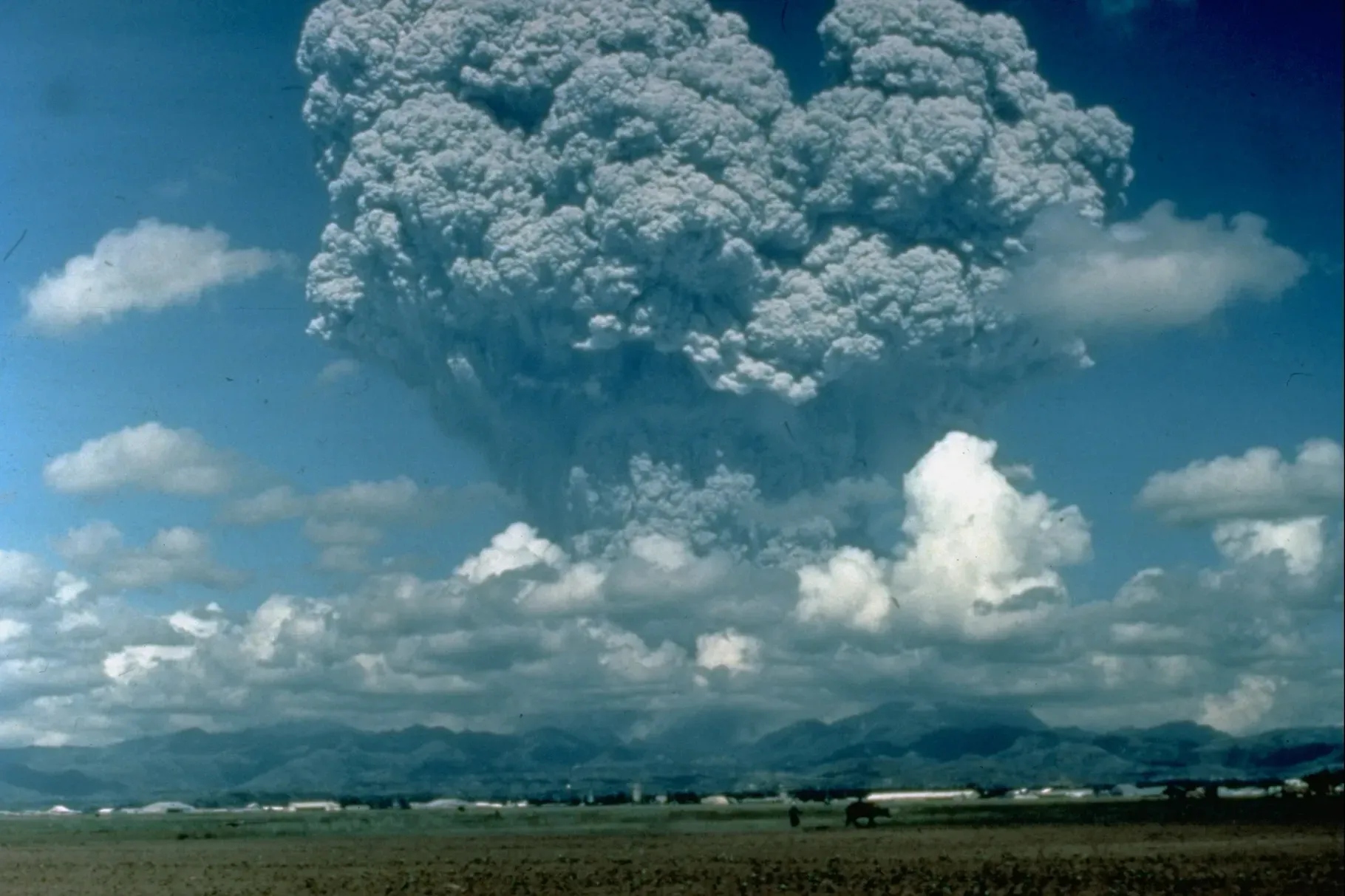
David H. Harlow, USGS
Would it work? In 1991, the eruption of Mount Pinatubo spewed 17 million metric tons of sulfur dioxide into the atmosphere, which cooled the Earth by roughly 0.5 degree Celsius (0.9 degree Fahrenheit) for about a year. After the Tambora volcano in Indonesia erupted in 1815, parts of Europe and North America saw a “year without summer.” Scientists have looked to those events to try to understand what might happen if humans deliberately released sulfur dioxide into the stratosphere. But there is a world of difference between studying naturally occurring volcanic eruptions and intentionally modifying the amount of solar radiation that reaches Earth’s surface.
Solar geoengineering is a controversial area of research for numerous reasons. In 2008, Robock penned an article for the Bulletin on the 20 reasons solar geoengineering could be a bad — possibly even catastrophic — idea; a more recent version expanded the list to 26.
Introducing particles like sulfate aerosols into the stratosphere could create a plethora of new and unpredictable problems. Possible negative impacts may include changing regional weather patterns — creating or shifting areas of drought or regions that receive extreme precipitation — or altering tropospheric chemistry and ocean circulation patterns. Partially blocking the sun’s rays could interfere with normal plant processes and reduce agricultural yields. Adding sulfate aerosols to the stratosphere would degrade the ozone layer (thereby increasing global cancer rates) and increase acid rain. The potential effects of solar radiation management are so large and wide-ranging as to implicate almost every aspect of life on the planet.
Even in best-case scenarios, it would be only a partial stopgap. Solar geoengineering, for example, does nothing to ameliorate ocean acidification, which occurs when the ocean absorbs carbon dioxide from the atmosphere. This acidification threatens ocean life like oysters, clams, sea urchins, corals, and the calcareous phytoplankton that help make up the foundation of the marine food web on which much of humanity depends.
Also, many experts agree, global governance structures are profoundly ill-equipped to deal with the kinds of questions solar geoengineering will raise: How much cooling is the right amount? (Wouldn’t Russia want things a bit warmer, and India somewhat cooler?) Who benefits, and who doesn’t, and who decides? How would disputes about the negative impacts of any geoengineering regime be adjudicated? The type of world-spanning, long-term regulatory scheme required to institute and manage solar geoengineering has no precedent in human history.
Some have argued that merely conducting research could inspire rogue actors to take things into their own hands, with potentially disastrous geophysical and geopolitical results. Then there is the moral hazard argument against geoengineering: If humans began cooling the Earth with solar geoengineering, wouldn’t that give citizens a false sense of security—and companies an excuse to pump the brakes on decarbonization of energy systems and proceed with fossil-fuel-burning business as usual?
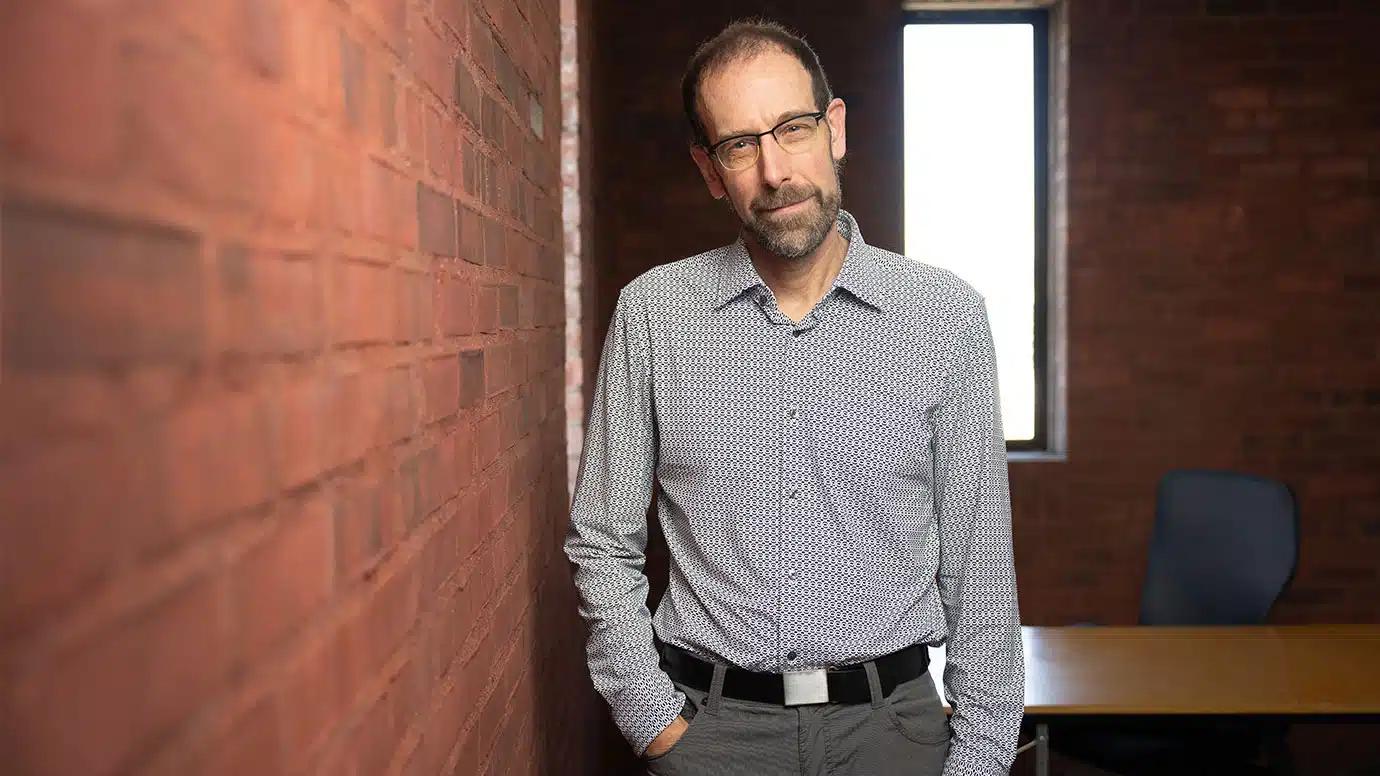
Jason Smith / University of Chicago
As fringe as the idea of solar radiation modification once was and as generally controversial as it remains, it is gaining some traction. Last spring, the University of Chicago hired David Keith, one of the most visible proponents of solar geoengineering, to lead a new Climate Systems Engineering initiative, committing to at least 10 new faculty hires for the program. The group will study solar geoengineering, as well as other kinds of Earth system modifications aimed at addressing the climate crisis.
With this initiative, the University of Chicago is attempting to position itself as the place for serious scientific consideration of the logistics and implications of Earth system interventions aimed at reversing or counteracting climate change. It is part of a broader university effort to become a global leader in the climate and energy space.
Previously, Keith was at Harvard University, where he helped launch the Solar Geoengineering Research Program. After repeated delays and years of controversy, Harvard recently canceled a small-scale outdoor geoengineering experiment that Keith helped plan. That experiment would have involved launching a high-altitude balloon, releasing fine particles of calcium carbonate into the stratosphere, and then sending the balloon back through the cloud to monitor how those particles disperse and interact within the atmosphere, and with solar radiation.
Although many of the sources interviewed for this article acknowledged the controversial nature of solar geoengineering, they also pointed out that the University of Chicago is a leading educational institution that prides itself on not shying away from tough questions or topics. And because of its provocative nature, climate systems engineering — a term the university created to describe this emerging field — is also an area of research that, until now, has lacked strong, centralized institutional support. This has created a vacuum that University of Chicago leaders seem excited to fill.
Michael Greenstone, the director of the Energy Policy Institute at Chicago, or EPIC, led the faculty committee that proposed the Climate Systems Engineering initiative and was instrumental in bringing Keith to Chicago. Greenstone described the academy’s indifference to geoengineering research as “malpractice.”
“We’re going to wish we had effective carbon dioxide removal technologies operating at scale, or we’re going to wish we knew how to modulate temperatures with various forms of geoengineering to prevent human suffering,” Greenstone told the Bulletin. “But these ideas are not being stress-tested in a systematic way, and the University of Chicago’s tradition of bravery at pursing important ideas, no matter how controversial, make this the perfect place to create the field of climate systems engineering.”
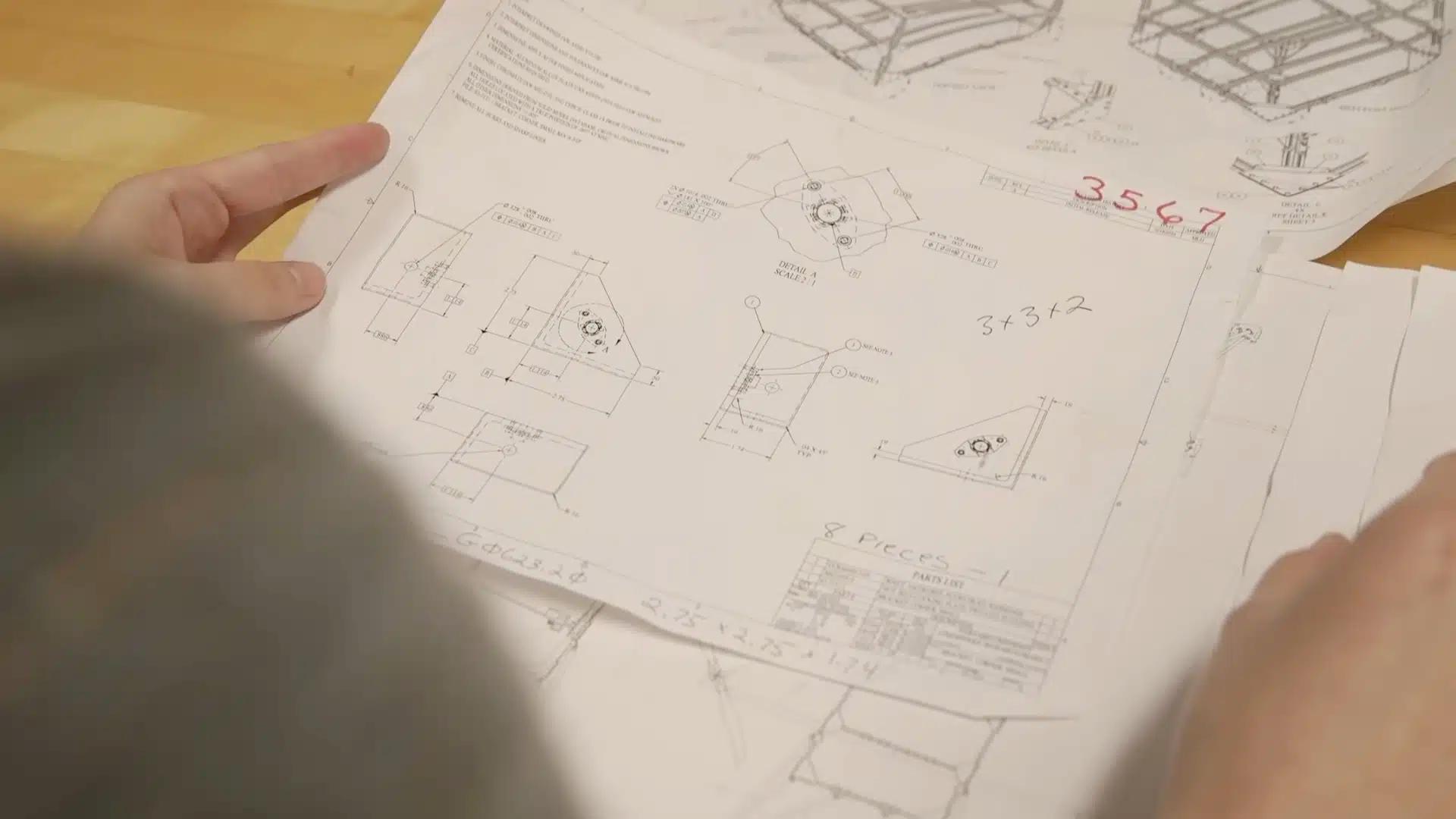
WebsEdge / YouTube
In the early stages of developing the initiative, Keith helped the university organize an event with researchers working on topics that could fall under the umbrella of climate systems engineering.
“Here was the most distinguished group of scholars in the world in this field,” recalled university president Paul Alivisatos. “To a person, what they said is, ‘I’ve always felt that I have to do this work very quietly by myself, as one person in my university, because it’s just not a set of ideas that people want to engage with.’” (Alivisatos did not respond to a later request for a list of event attendees. Keith responded in an email: “I don’t believe we told people the meeting would be public so I would have to go back and double check that each person okayed it which seems like too much trouble.”)
There are researchers studying solar geoengineering at Harvard, Cornell, Princeton, Colorado State, and ETH Zurich, but, Keith said, most of those programs came about because of “a single person who pushed it forward, sometimes against resistance, and then it grew.”
“I thought it was really different and consequential to have UChicago — without any particular person on campus who was an advocate of climate engineering research — to say, ‘we think this makes sense to build as a field, to actually build it in a serious way and make a commitment to do that,’” Keith added.
As with many new university initiatives, this one started with a new president. In November 2021, Alivisatos charged a university committee with the task of determining how the university could best establish itself as a “global leader in the climate and energy space.” One of the specific requests was to “[d]etermine the areas in which the University of Chicago does not currently have strong faculty presence but could expand its influence by facilitating the development of new ideas in key areas that other universities are missing.”
The committee was chaired by Greenstone, an economist, and included two other economists, an ecologist, two molecular engineers, a historian, a geologist, a law professor, and a computer scientist.
Susan Kidwell, a geologist and paleobiologist, was shocked to be the only committee member from the geophysical sciences department and said that there were two other people from the department who would have been “more appropriate.” Kidwell said that the make-up of the committee helped avoid “preaching to the converted,” but it raised the eyebrows of outside observers.
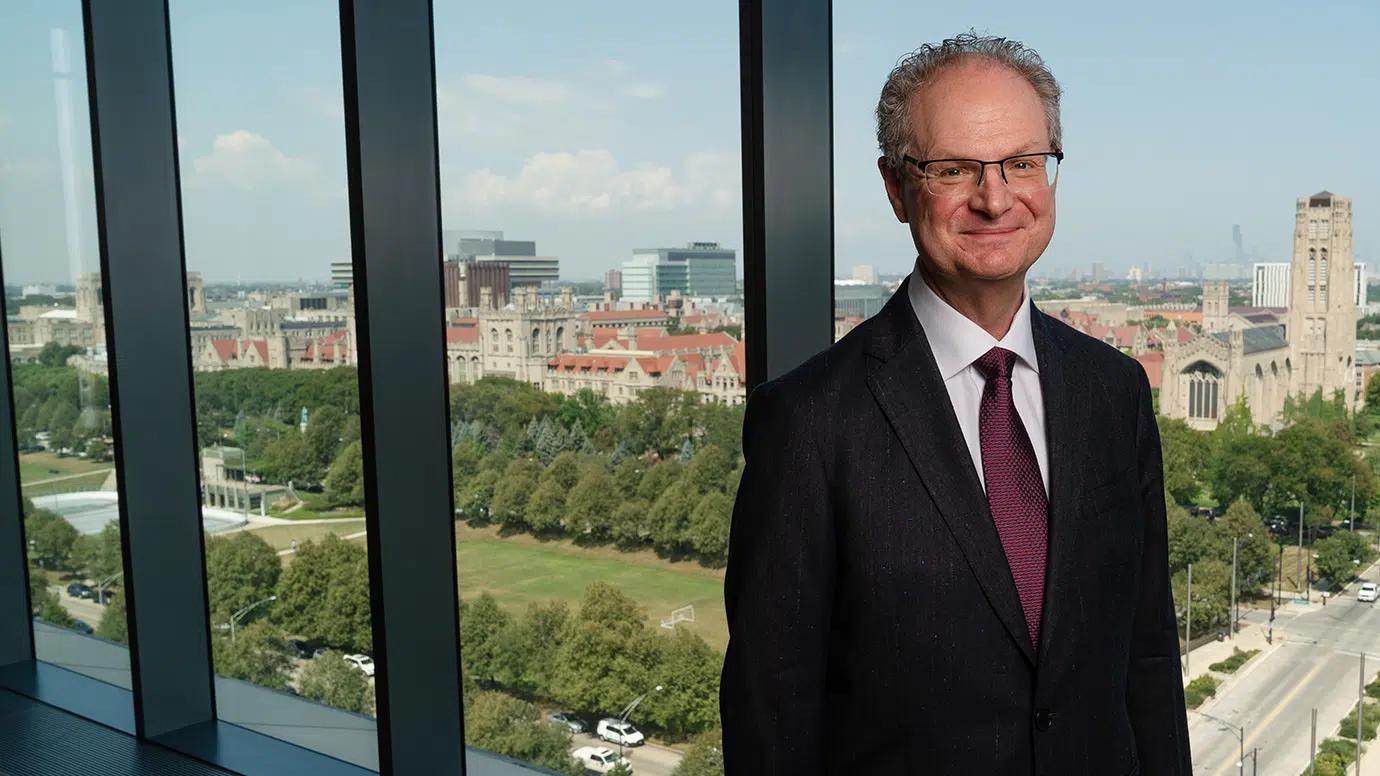
Jason Smith / University of Chicago
“I think part of the big story here is not even just about geoengineering, specifically, but about the fact that the university decided to basically give control over their biggest climate initiative, primarily, to the economics department,” said Raymond Pierrehumbert. Pierrehumbert is an Oxford physicist and former University of Chicago professor in geophysical sciences, a former member of the Bulletin’s Science and Security Board, a prominent climate change expert, and an outspoken critic of solar geoengineering.
Greenstone has done a lot of work at the intersection of climate, the environment, and economics, Pierrehumbert acknowledged. While the chief economist on President Obama’s Council of Economic Advisers, for example, Greenstone was one of the key architects of efforts to calculate and use the social cost of carbon in federal policy making. But he is not a climate or atmospheric scientist, nor were any of the other members of the University of Chicago committee that explored the university’s role in climate and energy.
The committee’s report in March 2022 made several recommendations, including the design of new undergraduate and graduate programs related to energy and climate and the development of “climate forward” policies, so the university’s operations reflect its commitment to climate action. The strongest recommendation was to create a new Climate and Energy Institute, what one faculty member described as a “super EPIC,” with a mission to “fundamentally alter education and research on a global scale.” It has since been announced that Greenstone will be the founding director of that new institute.
The committee recommended the university start research programs within the new institute in three substantive areas: economics, markets, and policy; energy conversion and storage systems; and climate systems engineering.
The last stands out for its tangential relation to the “energy” part of climate and energy. But for better or worse, climate systems engineering certainly fit the brief of filling a gap in the research landscape and creating a plausible path to becoming a global leader in a specific area.
According to the committee report, “[M]ost models, including all major models used by the IPCC [Intergovernmental Panel on Climate Change], indicate that the world will need to deploy carbon dioxide removal technologies on a massive scale in the near future. Moreover, to blunt the pace of rapid climate change, nations may turn to geo-engineering tools, such as solar radiation management. Higher temperatures may also require managing, indeed perhaps engineering, ecosystems to be resilient to climate change and even help mitigate it.”
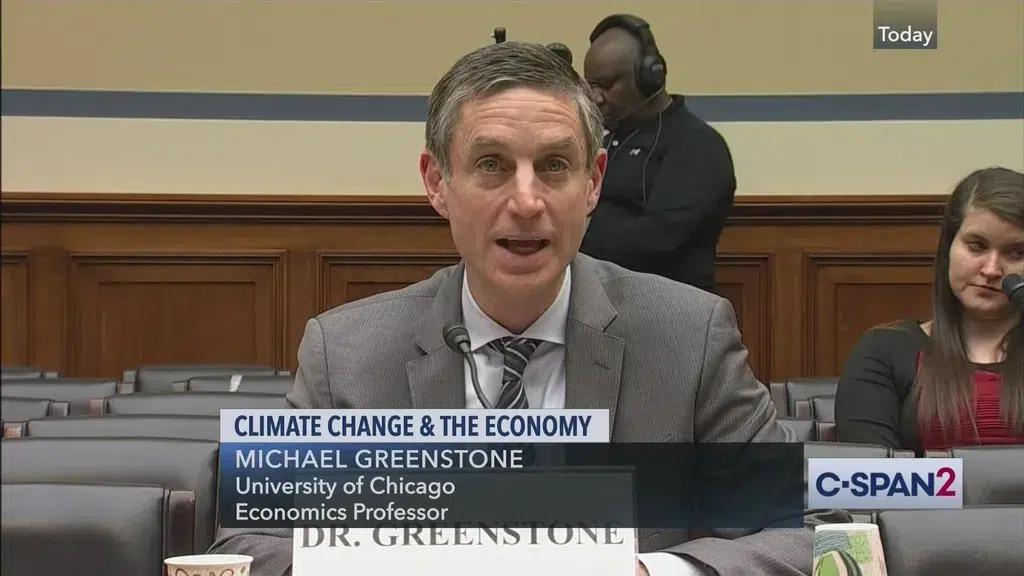
The report suggested creating a research initiative based around these problems and potential solutions, under the new umbrella term of “climate systems engineering,” which could “position the University at the forefront of this central challenge of reducing and perhaps reversing the harms from climate change.” This would include working on improvements in climate modeling and other computational tools, as well as “novel materials, sensing devices, and chemical strategies for carbon dioxide removal and geo-engineering.”
The report concluded its remarks on climate systems engineering by acknowledging the moral hazard argument against research into geoengineering and arguing that the university should not be cowed by that. It stated that “concerns about reputation and that innovation will incentivize increased greenhouse gas emissions today have prevented many universities from adequately engaging in this area. In many respects, climate systems engineering resembles other instances where UChicago’s fearless commitment to go wherever the facts lead has helped build its intellectual reputation.”
Where some supporters of the university’s initiative see research bravery, other experts see the potential for enabling extraordinarily dangerous interventions in Earth’s climate systems.
Historically, geoengineering has referred to either taking carbon dioxide out of the atmosphere (carbon removal) or solar radiation management, which could take the form of releasing reflective aerosols into the stratosphere, brightening clouds with salt water, or putting sun shields into space. The University of Chicago is also including interventions like glacier geoengineering—using manmade structures to protect ice shelves from warming ocean waters, for example—under the umbrella of climate systems engineering.
While the Climate Systems Engineering initiative will study open system carbon removal, like enhanced rock weathering or ocean alkalinity enhancement, it will not study direct air capture, something Keith worked on at a company he founded, Carbon Engineering. That company was recently purchased by fossil fuel giant Occidental for $1.1 billion. Occidental will use the captured carbon dioxide, at least in part, to pressurize oil fields and extract more oil from them. The industry considers the technology a kind of lifeline: “If it’s produced in the way that I’m talking about, there’s no reason not to produce oil and gas forever,” Occidental CEO Vicki Hollub told NPR. (Keith has had no legal involvement with Carbon Engineering since the sale was completed.)
In his 2013 book, A Case for Climate Engineering, Keith wrote that carbon removal and solar geoengineering are no more similar to one another than they are to technologies that advance decarbonization or energy efficiency.
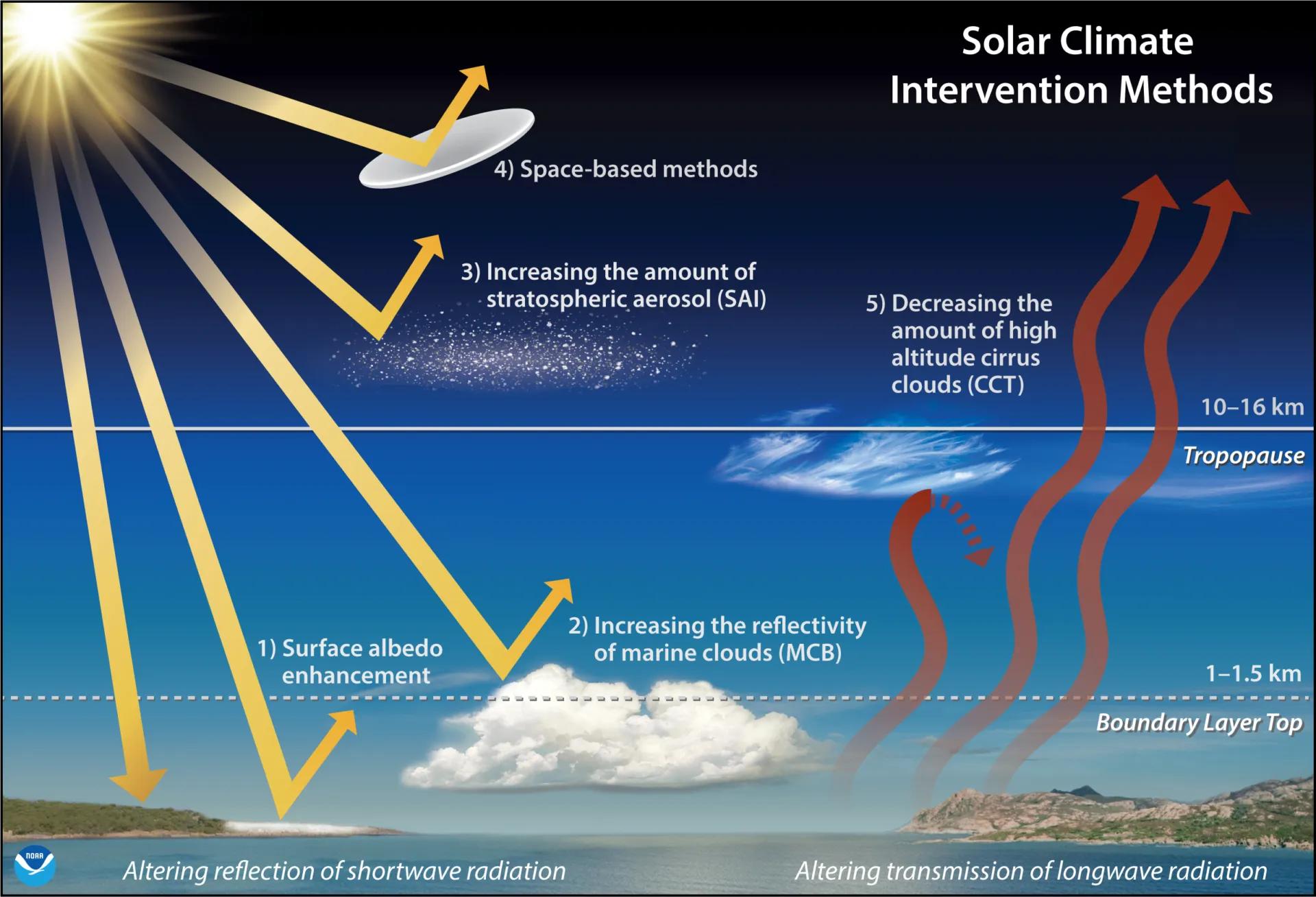
Among those options for managing climate risk, the ethical, technical, environmental, and governance questions that accompany solar radiation management are unique. “Because solar geoengineering and carbon removal have little in common, we will have a better chance to craft sensible policy if we treat them separately,” Keith wrote.
Keith is now in charge of a program that not only, in a sense, lumps the two technologies together, but also throws in a few others for good measure. “I do feel there’s some level of crow eating because I spent a lot of time arguing how totally separate they are — I’ve even done that in congressional testimony. Now I’m running something that does both,” Keith said. “A lot of people I respect have been lumping them forever. And so sometimes you have to listen to people.”
Open system carbon removal and solar radiation management, Keith added, both raise a lot of complicated environmental and Earth science issues. On the other hand, enhanced rock weathering — spreading finely ground silicates on Earth’s surface to speed up the chemical reactions that pull carbon dioxide from the atmosphere — does not raise the same kind of governance questions as solar radiation management. “Local entities, national governments or state governments, can regulate soil health, more or less, on their own,” Keith explained. “So in that sense, it’s not global the way solar geoengineering would be.”
Other experts have argued the two technologies must be considered as a pair because the arguments in favor of solar geoengineering often depend on the success of large-scale carbon dioxide removal.
One reason that solar geoengineering has received attention recently is because the world has been slow to reduce greenhouse gas emissions, threatening to push global temperatures past the aspirational limit set by the Paris climate agreement. Keith and others have argued that solar geoengineering could be a way to limit warming while the world gets around to slashing emissions and figures out how to do large-scale carbon dioxide removal from the atmosphere.
Alivisatos echoed that sentiment, telling the Bulletin, “What this would be doing more than anything else, presumably, is offering one way to have more time.”
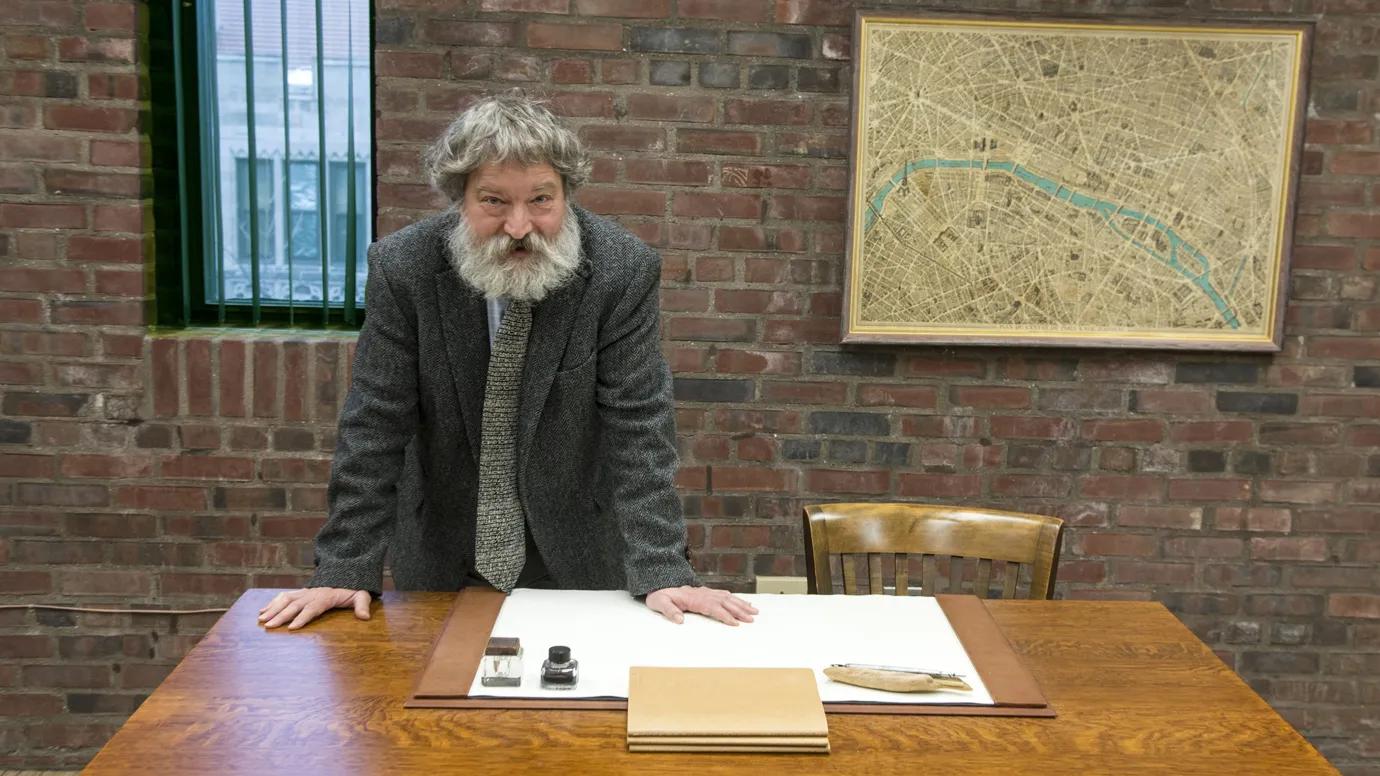
Robert Kozloff / University of Chicago
But Shinichiro Asayama, a researcher at the National Institute for Environmental Studies in Japan, and Mike Hulme, a geographer at the University of Cambridge, have compared this strategy to the risky subprime mortgage lending that tanked the world economy between 2007 and 2010. If solar geoengineering is deployed to compensate for slow emissions reductions, banking on the world’s as-yet unproven ability to do large-scale carbon removal, Hulme and Asayama argue, it will create an ever-increasing “climate debt” that carbon dioxide removal may or may not ever be able to pay back.
Taking on an increasing amount of climate debt could prove to be too easy and seductive, if solar geoengineering were ever successfully deployed. This worries Robert Socolow, a physicist and environmental scientist — and member of the Bulletin’s Science and Security Board — known for his work on climate stabilization efforts. “My own guess is that if geoengineering works, humanity will not want to phase it out,” Socolow told the Bulletin. “It will become more agile and provide increasing control, and that will be addictive. A limited geoengineering epoch is not something I would bet on. That makes me see deployment as truly fateful, a crossing of the Rubicon, probably permanently changing humanity’s relationship with nature.”
This is a major concern of Pierrehumbert, as well. “If you have to do geoengineering, you’re saddling the next 1,000 years of humanity with continuing to do it,” he said. “And that’s a huge intergenerational obligation, which engages really deep ethical concerns.”
Opinions among University of Chicago faculty members who spoke to the Bulletin about the initiative ranged from cautious enthusiasm to quiet skepticism.
David Archer, a climate scientist in Chicago’s geophysical sciences department and a member of the Climate Systems Engineering initiative board, expressed a kind of desperate optimism about the initiative, pointing out that the Earth is dangerously near catastrophic climate tipping points, like thawing permafrost and melting ice sheets.
“The idea of dialing down the temperature of the whole planet is horrifying,” Archer said. But, he added, it’s not nearly as horrifying as “dialing it up with CO2,” because any sulfates or particles used in solar geoengineering will soon fall out of the atmosphere, whereas carbon dioxide will persist for centuries.
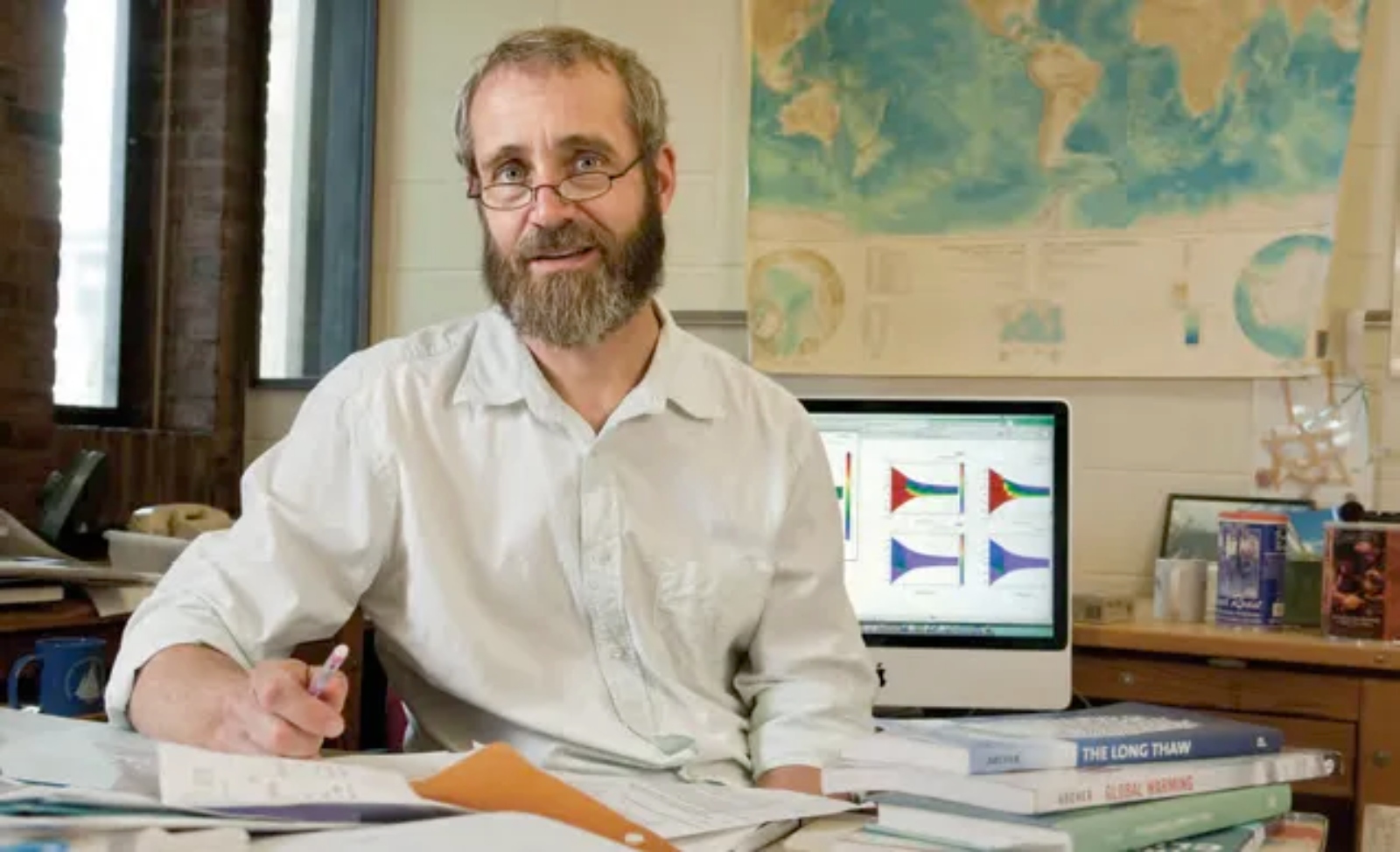
Lloyd DeGrane / University of Chicago
Archer pushed back on critics who fear that the cure could be worse than the disease. “I’m primarily opposed to outdoor release of CO2,” he said. He pointed out that many critics of geoengineering will casually take cross-country or international flights, while he abstains from flying if he can help it. “I’m just so much less frightened about sulfur emissions than CO2 emissions, and everybody is so sanguine about CO2 emissions. I just have trouble taking it seriously.”
Some of the faculty members I interviewed expressed the opinion that if more research into—and potentially even experimentation with — solar radiation management and other kinds of geoengineering was inevitable, they would rather it take place at the University of Chicago than at a less rigorous institution, or some private start-up.
“We thought, well, this isn’t going away,” said Fred Ciesla, a planetary scientist and former chair of the geophysical sciences department, describing some of the conversations he had with his department colleagues about the program. “Rather than be on the periphery of it, why not bring in people that we trust to take on — like I said, to hold up the research to the standards that we set and expect here at the University of Chicago, and make this a really rigorous investigation, make sure it’s being done with the care that is needed.”
Kidwell pointed out that there are already some efforts to manipulate the climate taking place outside of academia, with great potential for non-governmental actors to engage in risky experiments. Make Sunsets, a start-up using balloons to release sulfur dioxide gas into the stratosphere and selling “cooling credits” to fund its work, is one example.
“Climate engineering is very scary,” said Kidwell. “As a scientist, and as a citizen, I want to see this field investigated in a very serious and intentional way. And I want it to be done somewhere where it’s surrounded by scientists, [and] the engineers are not left alone.”

At least one faculty member is already thinking about her responsibilities within an institution that is prioritizing this kind of research. Elisabeth Moyer, an atmospheric scientist at the University of Chicago, submitted a $30 million grant proposal to NASA for a field campaign to take point measurements in the atmosphere over two summers. “And that’s just basic preliminary background that you would want to do before even thinking about doing planetary engineering,” she said, underscoring the magnitude of work that still needs to be done and the associated expense. “The planet is not the same everywhere. The southern hemisphere is very different from the northern hemisphere. We’ve never flown modern instrumentation to study stratospheric aerosols in the southern hemisphere of our own planet.”
Initially, a decision on Moyer’s proposal was delayed because Congress had not passed a budget. Moyer has since learned that NASA rejected the proposal.
“We’re proposing planetary geoengineering, and our government is not capable of passing a budget allocation,” she said, pointing to the kind of governance and implementation hurdles that geoengineering would face even if it were deemed technologically feasible and environmentally safe.
Others were careful to draw a line between solar geoengineering research and implementation.
“I’m a strong proponent of doing the research,” said Robert Rosner, an astrophysicist at the university, former director of the Argonne National Laboratory, a member of the Bulletin’s Board of Sponsors, and part of the group overseeing the Climate Systems Engineering initiative. “I’m not a strong proponent of actually doing it [solar radiation management].”
It is important to learn as much as possible about what geoengineering would entail and what the potential consequences would be, Rosner said, “and to suss out in particular what the unintended consequences could be, what kinds of things could happen that we didn’t really think hard enough about, because we didn’t do the work that’s necessary.”
The two University of Chicago faculty members who expressed greater skepticism about the initiative were unwilling to go on the record with their doubts, but geoengineering critics outside the university had no such reservations.
“In [my book] The New Climate Wars I talk about that nexus of despair and techno-optimism, and geoengineering as weaponized doomism and despair,” said Michael Mann, a climate scientist at the University of Pennsylvania. “The primary thing [that worries me] is the possibility that we could actually accelerate climate changes. You know, we’re not confident enough to know that we couldn’t change regional climate, [and] end up warming the Arctic, parts of the Arctic, even faster, at the expense of cooling the continents, [or] slowing down the hydrological [cycle].”
Mann also fears that researching solar radiation management could derail other climate action. “Why is it that Rex Tillerson says that climate change is an engineering problem?” Mann asked. “Isn’t that convenient that the [former] CEO of ExxonMobil wants us to think that?” He flagged the techno-optimism of wealthy business figures like Bill Gates as a particular concern, for funding technological solutions to climate change while downplaying or rejecting more effective political solutions aimed at reducing greenhouse gas emissions.
Gates supports geoengineering research and helped fund the aborted Stratospheric Controlled Perturbation Experiment, or SCoPEx, that David Keith worked on at Harvard. Gates was also an early investor in Keith’s direct air capture startup, Carbon Engineering, and Keith has advised the billionaire on topics related to climate and energy.

These prior efforts might have made Keith an appealing candidate to lead what the University of Chicago committee explicitly said would be an expensive initiative. In their report, the committee wrote, “it is important to note that for UChicago to become a global leader in climate systems engineering, especially geoengineering, it will be necessary to make substantial investment because the field is emergent and largely unrepresented on the University’s campus.”
The university recently was in the news because of the poor state of its finances, and last December, administrators said they planned to reduce the operating budget by a quarter.
When asked whether the university would partner with private donors or companies, Alivisatos said, “Not ready to say what we’re going to do in that space yet, honestly.”
But he pointed to the University of Chicago’s participation in the Chan Zuckerberg Biohub Chicago, along with University of Illinois Urbana-Champaign and Northwestern University, as an example of “philanthropic dollars that are really being focused for the long-term understanding of something that is deeply important.”
“In my opinion, the great universities will be ones that are good and adept at partnering with other institutions and other stakeholders in society, to help bring everything to bear to make it happen,” Alivisatos added. “And we shouldn’t be afraid of that.”
The government is another potential partner for the program, specifically the US Energy Department’s Argonne National Laboratory, a University of Chicago affiliate, although what that partnership might look like is still up in the air. “We really want [the partnership with Argonne] to work,” Keith said. “I think there’s plenty of people at Argonne who want it to happen. There’s no really substantive thing that’s happening yet.”
Alivisatos was the director of the Lawrence Berkeley National Laboratory from 2009 to 2016, and as the president of University of Chicago, is currently the chair of the Board of Governors at Argonne.
Whether the world is warming up to the idea of solar geoengineering wasn’t something the people interviewed for this article could agree on. “Things are moving so quickly,” Keith said. “And this feels like a year that’s sort of pivotal, where people’s thinking about this is really changing.”
Last year, the White House Office of Science and Technology Policy issued a congressionally mandated report that explored the pros and cons of federal research into solar radiation management, although it explicitly said there are “no plans underway to establish a comprehensive research program focused on solar radiation modification.” A few months later, the UNESCO’s World Commission on the Ethics of Scientific Knowledge and Technology published a report on the ethics of climate engineering.
Earlier this year, Keith attended a meeting hosted by the Environmental Defense Fund that convened several dozen scientists, activists, and philanthropists to discuss an expected infusion of funding into solar geoengineering by techno philanthropists. He also said he’s seen a proposal related to solar geoengineering that EDF made to one of its funders. “Don’t mistake this for me thinking EDF is arguing for implementation, but if they do this, then EDF clearly will be advocating for research in a serious way,” he said.
Earlier this month, the Environmental Defense Fund’s plans were made public by the New York Times, which reported that the group will spend millions on research of solar geoengineering technologies. The group hopes to begin issuing grants this fall. “We are not in favor, period, of deployment. That’s not our goal here,” Lisa Dilling, the associate chief scientist at EDF running the program, told the Times. “Our goal is information, and solid, well-formulated science.”
Others pointed out how far solar geoengineering is from being a reality, in spite of the argument Keith made in his 2013 book that it would be easy and cheap and that the “specialized aircraft and dispersal systems required to get started could be deployed in a few years for the price of a Hollywood blockbuster.”
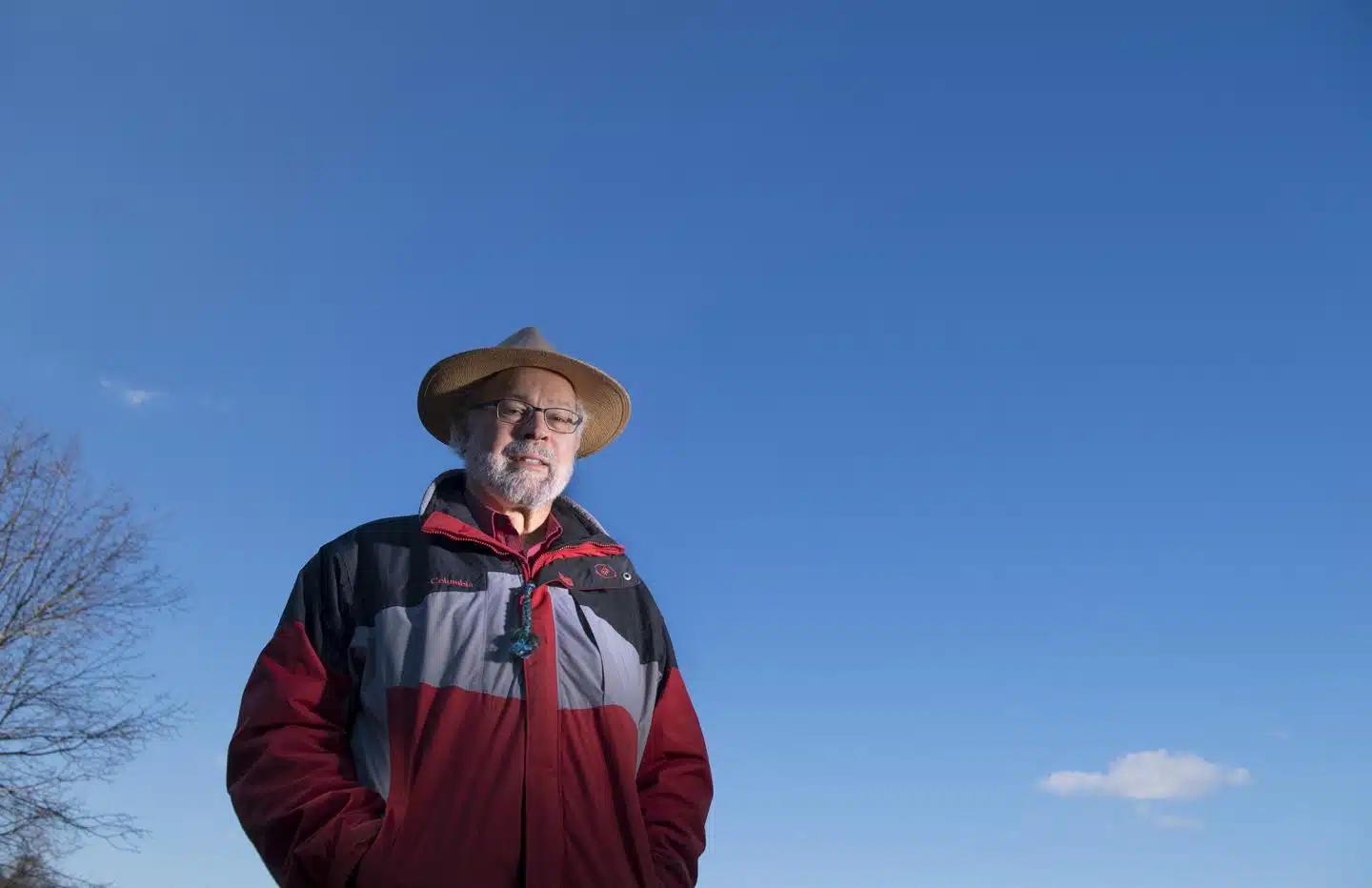
Nick Romanenko / Rutgers University
Over a decade later, very little practical progress has been made on that front. “If you wanted to do it, today, or tomorrow, you couldn’t, because the technology doesn’t exist,” Robock said. “So you’d have to invent airplanes that could fly that high and carry this stuff up there.”
Robock — an environmental scientist perhaps best known for his atmospheric modeling work supporting the concept that nuclear war could inject smoke into the stratosphere, cooling Earth and causing “nuclear winter” — thinks that more research is likely to provide even more reasons not to do solar geoengineering. “People say it might be a slippery slope to deployment,” he said. “And my answer is, it might be a sticky slope. The more research we do, the more problems we might find.”
It’s hard to reconcile the strong opinions on the relative risks and benefits of solar geoengineering.
Robock, who recently attended the Gordon Research Conference on Climate Engineering, an event he and Keith jointly started, succinctly summed up the quandary: “The number one reason it would be a good idea is if you could reduce global warming, you decrease many of the negative impacts of global warming. The question is, which is riskier: doing it or not doing it?”
Keith still leans towards the latter. “I think, a cold read of the literature is that if you did a relatively small amount, meaning that’s just one of the things you do, as well as emissions cuts, not instead of emissions cuts, and if you balance it between the hemispheres, then I think it’s fair to say that the evidence that the risks would be small compared to the benefits is pretty strong,” Keith said. His calm, matter-of-fact manner and style of writing—his book makes for a compelling read—are persuasive.
But so are the arguments of solar geoengineering skeptics, like Pierrehumbert, who easily lists all the things that could upset anything like Keith’s ideal scenario. If, for example, solar geoengineering is deployed successfully, and it cools the Earth and lessens the impacts of global warming, people may continue emitting carbon dioxide as they do now. Atmospheric carbon dioxide will continue to rise — and remain there for centuries — and the amount of solar geoengineering necessary to counteract it will also increase. In the meantime, the oceans will continue to absorb large amounts of carbon dioxide, leading to ocean and coastal acidification that, the US Environmental Protection Agency says, would “affect entire ecosystems, including one animal at the top of the food chain—humans. Humans rely on the ocean for food and other economic resources. Ocean and coastal acidification may not just affect life underwater, but ultimately all of us.”
Or say Russia wants to keep its Arctic ports clear of ice, and it introduces countermeasures to interfere with solar geoengineering. If the solar geoengineering that masks global warming is suddenly cut off, that could create a sudden rate of warming called termination shock that could be worse than what the world is experiencing now.
“People say that climate change is different from nuclear war, because it doesn’t set on all at once,” explained Pierrehumbert. “And that’s pretty much true. It’s a sort of a creeping increase. But the one thing that could make the catastrophe of climate change as much of a mega-death/almost-instant-catastrophe as nuclear war is solar geoengineering, and the nightmare scenario where we start deploying it. And then the world uses that as an excuse to continue emitting CO2 … and then we have an event which might even be nuclear war, that causes it to stop. And then all that warming instead of playing out over centuries, that warming plays out over a matter of a decade or a half decade.”
Keith has not overlooked these risks. “When I consider geoengineering scenarios that lead to outright disaster, or converse scenarios in which geoengineering is prematurely abandoned despite its social and environmental benefits, all involve geopolitical failures,” he wrote in his 2013 book. He also argued that geoengineering is a geopolitical leveling technology, similar to the internet or nuclear weapons, and that “like other levelers — most notably nuclear proliferation — this fact is disturbing in its potential to lead to international conflict.”
Certainly any future implementation of solar radiation management would require a monumental effort on the part of global leaders to ensure adequate and fair consideration of potential and actual impacts, and to make incredibly difficult decisions about how much cooling to engineer, and exactly how that cooling will be achieved. Such cooperation would have to continue for decades, if not indefinitely, and it would need to be durable enough to respond — sanely — to the inevitable questions that would arise, like whether a particular natural disaster on one continent could be attributed to climate engineering or to normal climatic variations. Aaron Tang, a scholar of climate governance at the Fenner School of Environment & Society at the Australian National University, has argued in the Bulletin that the robust, global system necessary to monitor and manage any implementation of solar geoengineering is a “pipe dream.”
This challenge was front and center at the U.N. Environment Assembly in Nairobi this year. A Swiss resolution called for a working group to assess the feasibility of solar radiation modification, as well as the risks, benefits, and uncertainties of deployment. The United States supported research, but argued it should be conducted by a different mechanism — specifically, within a climate research program at the World Meteorological Organization.
In contrast, a group of African states — including Senegal, Kenya, Cameroon, Djibouti and South Africa, joined by Brazil, Mexico, Columbia, Barbados, Argentina, and Ecuador — called for a moratorium on solar geoengineering. Fiji, Vanuatu, and Pakistan — all extremely climate-vulnerable countries — largely supported that position. This divide underscores the vast challenge of fair and equitable representation and decision-making on solar geoengineering.
Moyer said she hoped that the Climate Systems Engineering initiative would study these governance issues in addition to the science and engineering aspects of climate systems engineering. “I think that an important component of this initiative would be hiring somebody who thinks very hard, in very practical terms, about international negotiations,” she said.
Keith said that he is working to hire someone who is “mostly on the social science side.”
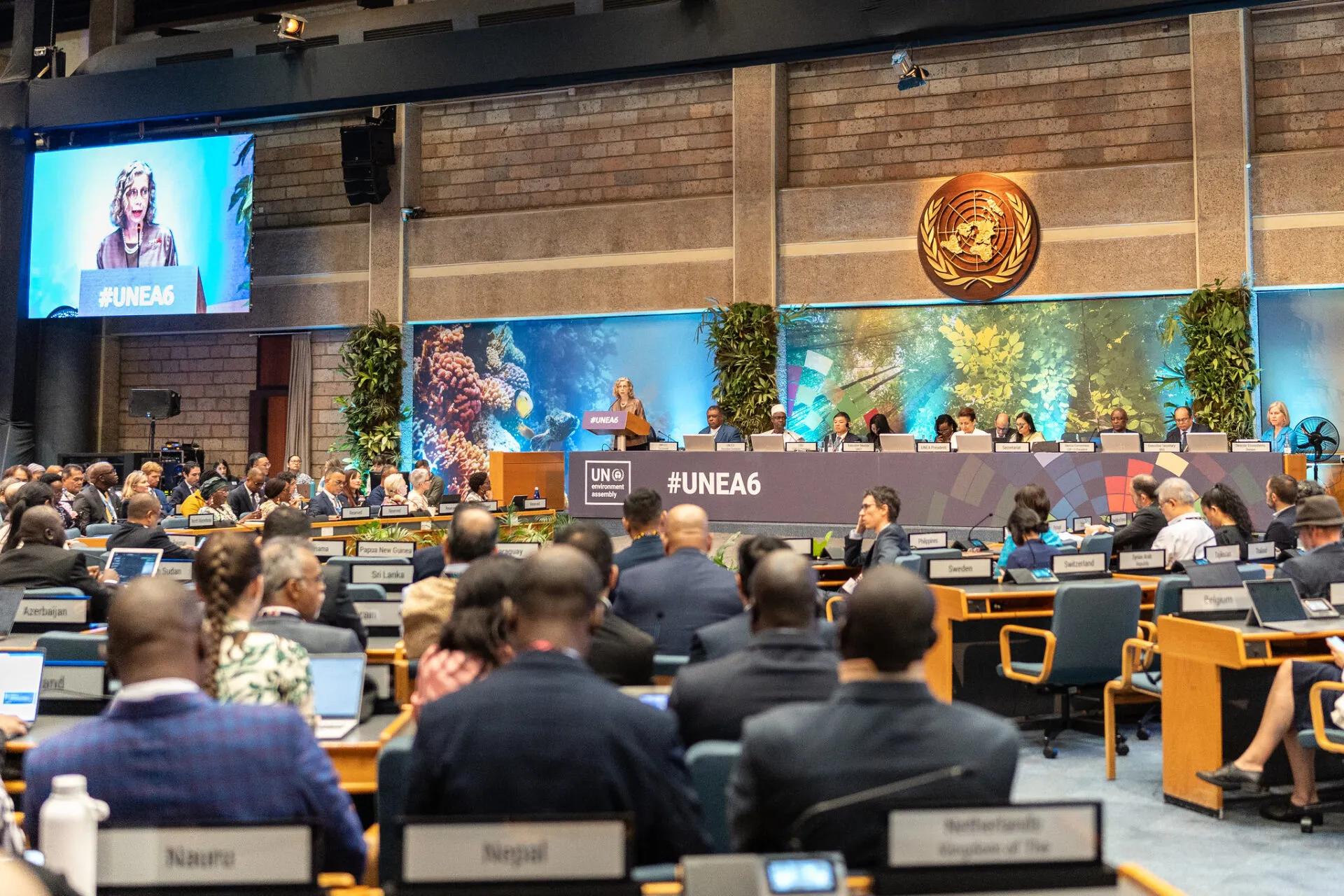
But when it came to specific and concrete goals for the program or the research questions he hopes to tackle, Keith was frustratingly vague. “I should be doing less of my own research,” he said. “I think it’s really important to be getting other people to do stuff, and then they decide what they’re doing. Which sounds kind of evasive.”
He also deflected questions about whether he would encourage or push for outdoor solar geoengineering research, like what he tried to do at Harvard with SCoPEx: “Not me personally, again, because I don’t think I’m going to do a lot of research myself. So I think the answer is, I don’t really know.”
Wherever the University of Chicago initiative leads, it will be into terra incognita — which was a good part of the motivation behind the initiative in the first place.
“Every university has some kind of climate effort now,” said Keith. “Quite apart from what’s good or bad about climate systems engineering or so on, universities do need to figure out how to focus a little bit to do something useful.”
It’s a “much-needed gap in the literature,” said one of the anonymous faculty members. “It is the kind of thing no one really wants to talk about or think about for various reasons. Most people would say that’s appropriate. It’s a needed gap. But it is definitely a gap. And there is no clear leadership there … so it’s a place where focused investment could create a real mark. Making a mark generically on climate change research is hard, a lot of institutions are all over that. There’s huge investment across the world. How are you going to do that? Here’s a way to do that.”
The question is whether boldly going where no other university has gone before is, in this instance, something to be lauded—or cause for extra scrutiny and skepticism. And worry.
This story was originally published by Grist with the headline Inside the University of Chicago’s controversial solar geoengineering initiative on Jul 6, 2024.



